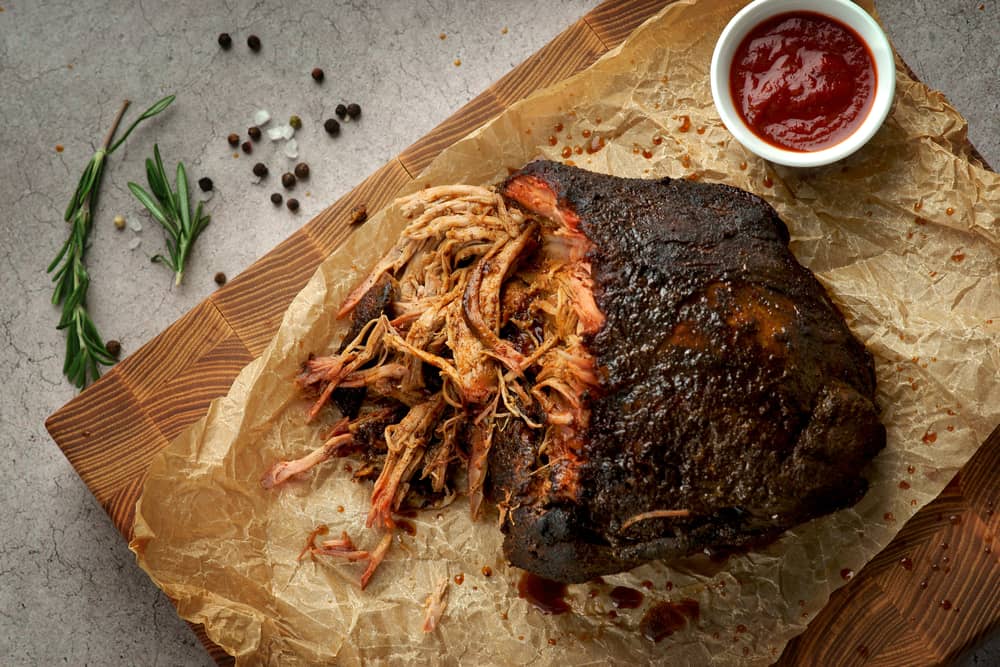
If you have a smoker, making smoked pulled pork should be at the top of your list of things to make with it. It’s perfect for making for a crowd, but it also stores and freezes well if you want to save some for another time.
Learn everything you need to know about making smoked pulled pork. We even have an easy recipe to follow.
Best Pork for Smoking Pulled Pork
Pork shoulder is commonly used for smoked pulled pork. As you might guess, it comes from the shoulder area of a pig and usually contains some meat from above and below the shoulder. This cut of meat typically has a large covering of fat on top known as the fat cap but is otherwise relatively lean due to it being an exercised part of the animal. By leaving some of this fat intact while cooking, you’ll get added flavor and moisture throughout the meat.
If you can’t find pork shoulder at the store, look for pork butt instead. It’s technically the same thing, but some places label it differently.
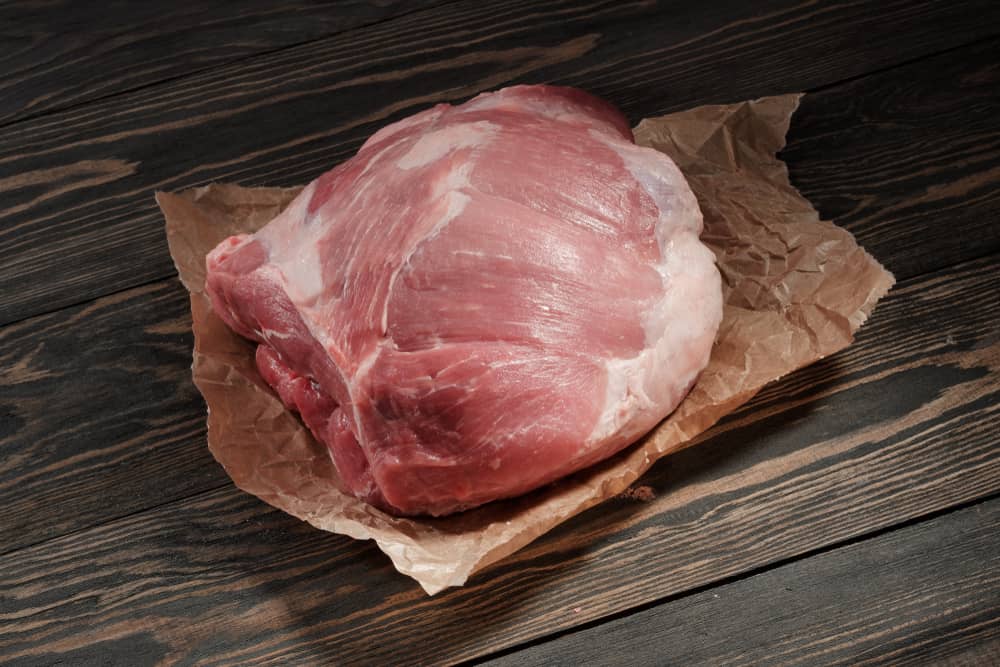
Prepping the Smoker
Ready to start smoking? First, follow these steps to get your smoker ready for smoked pulled pork:
- Clean the smoker. You don’t want other flavors or food particles from past cooks to affect your pulled pork. Make sure the smoker’s grates are clean and that there are no leftover food particles sitting in the smoker. Also, clean off the door, lid, or window to make it easier to check on your pork without opening the smoker. If you’re placing the pork directly on the smoker’s grates, be sure to oil the grates before preheating. Otherwise, use a grill pan for the pork.
- Add water. If your smoker comes with a water pan, fill the pan before preheating. Or, add a mixture of water and apple cider vinegar to the pan for a little added flavor to your pork. If there’s no water pan, you can create a makeshift one by using a small aluminum pan.
- Add wood chips or pellets. Don’t forget the wood, which is an essential part of bringing that tell-tale smokiness to the pork. For pulled pork, we love fruity woods like apple or peach, but maple and hickory work well too. Wood chips or pellets both work, but make sure you have enough to add more during the cooking process if necessary.
Prepping the Pork for the Smoker
As mentioned, pork shoulder has a fat cap that covers one side of the cut. It can be rather thick on some pork shoulders and thinner on others. No matter what, some of it should stay in place for the best flavor and moisture results. Don’t worry—most of it cooks down in the smoker, which is exactly what leads to those results.
Still, you can trim off any excess chunks of fat. And if the fat cap is on the thicker side, it’s perfectly fine to carefully trim off some of the layer. You can also score it using cross-hatch marks, which makes it easier for the heat to penetrate the thick layer of fat.
After trimming, season the pork. We like to use a dry rub for this but feel free to use whatever spices or rubs you prefer. Make sure to get all sides of the meat, including the fat cap, as the seasonings will help to create that crispy outer layer smoked pulled pork is known for.
Smoked Pork Tips
Before digging into the recipe below, check out several tips to make your smoked pulled pork the star of the show, from injecting it with flavor to understanding how to shred the pork after cooking.
To Inject or Not to Inject?
If you know anyone who uses a smoker for meat frequently, you’ve probably witnessed them injecting their meat. Pulled pork is no exception and is, in fact, one of the most popular meats to inject for smoking.
Injecting delivers flavors from the injection straight into the inside of the meat instead of flavoring the outside of the meat like rubs and marinades do. If you choose to inject the pork, you can still use whatever seasonings you’d like on the outside, but you could also get some extra flavor inside.
Smoking does a great job at really infusing flavor throughout a piece of meat, so injection isn’t a necessary step, but there’s no harm in adding an extra flavor burst if you’d like.
Cook It Low and Slow
It’s important not to rush the process of smoking pulled pork. For best results, pulled pork needs several hours of smoking time to get those delicious smoked flavors and become melt-in-your-mouth tender. A lower temperature is best for giving it plenty of time to do both.
Our recipe directs you to cook the pork at 225 degrees, which we’ve found to be the best temperature for flavor and texture with pulled pork. If you want to speed things up slightly, bump the temperature up just a bit to 230 degrees, but try not to go any higher than that.
Use a Meat Thermometer
The best way to make sure your pork is at the right temperature before you remove it from the smoker is to use a meat thermometer that’s heat-safe, meaning it can be kept in the pork as it cooks. Many thermometers are made specifically for grilling and smoking, allowing you to place the probe into the meat and leave it there so you can watch the temperature during the cooking process. Some even come with a connected mobile app that alerts you when your meat reaches a specific temperature.
This is especially helpful for pulled pork in the smoker. You’ll see in the recipe below that we suggest wrapping the pork when it hits a certain temperature and continuing to cook the wrapped pork to another temperature. Make it easy on yourself by using a heat-safe meat thermometer.
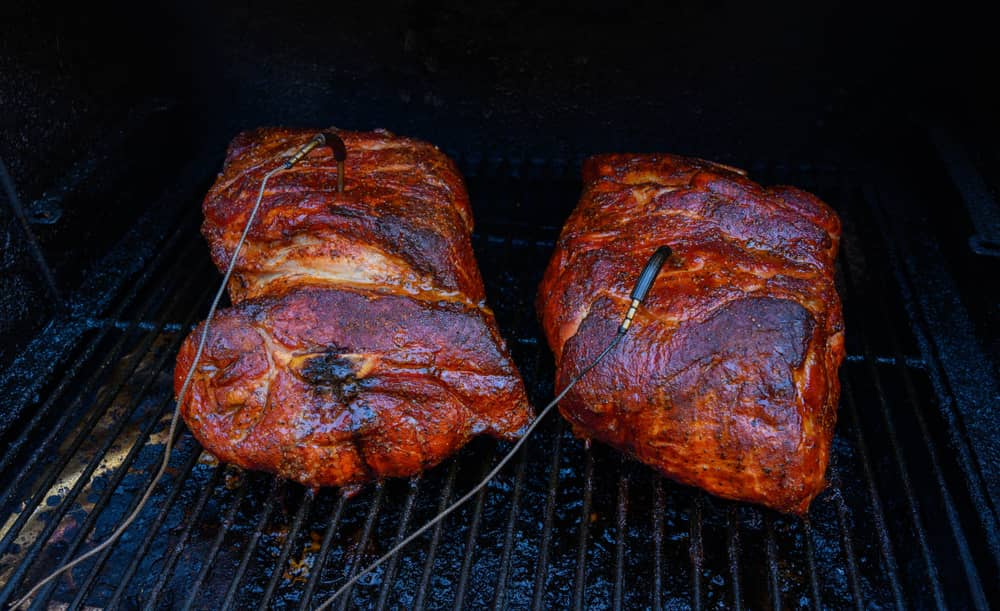
Follow Guidelines for Doneness
Smoked pork should cook to a final temperature of about 200 degrees, which is the temperature needed for it to become its most tender and flavorful. Using a meat thermometer is the best way to tell when your pork is ready.
With that said, you should expect a long period during smoking when the temperature doesn’t rise much. This is normal. It’s known as the “stall” because the temperature increase temporarily stalls. It usually occurs around the 150-degree mark. This is a good time to wrap the pork shoulder in butcher paper, which holds in heat to cook the meat internally a little quicker while protecting the outside of the meat from drying out.
Rest Before Shredding
Rest your pork shoulder at room temperature for 30-45 minutes before shredding it. During this time, the juices redistribute throughout the pork to help with flavor and moisture. Keep the pork wrapped tightly in foil while it rests.
After resting, the pork should still be warm to borderline hot, making it easy to shred.
Shred It the Right Way
Shred the pork shoulder by using shredding tools or two forks. If the meat is cooled down enough, you can shred it by hand. Start on one side of the pork shoulder and carefully pull apart the meat. Continue working down the length of the meat to the other end. Then, check through all the shredded pork to make sure you didn’t leave any large chunks behind.
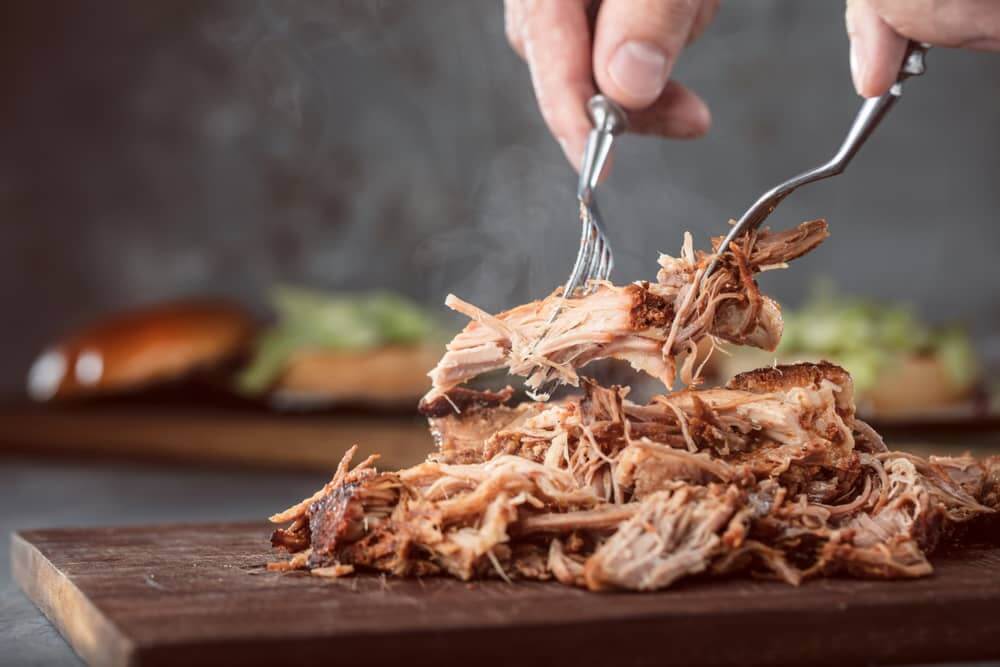
Smoked Pulled Pork Recipe
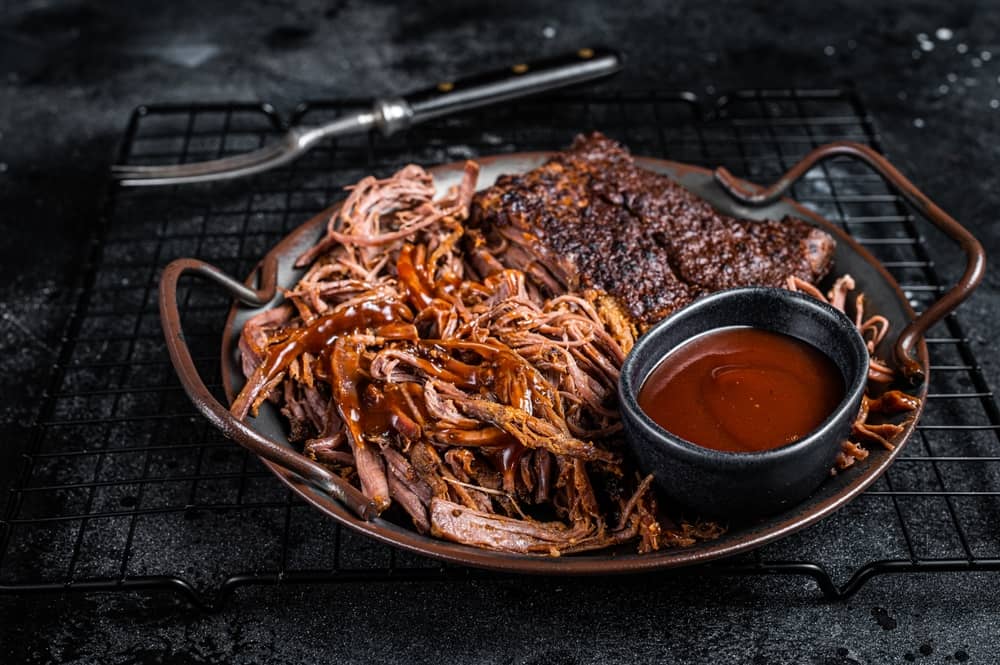
Now that you’ve read each tip for making smoked pulled pork, try your hand at the following recipe.
Ingredients
- 1 8-pound pork shoulder
- ¼ cup light brown sugar
- 2 tbsp salt
- 2 tbsp black pepper
- 2 tbsp garlic powder
- 2 tbsp smoked paprika
- 1 tbsp ground mustard
- 1 tbsp onion powder
- 1 tbsp chipotle powder
- Apple cider vinegar, for spritzing
Instructions
- Trim the pork shoulder and score the fat cap.
- Mix the brown sugar and all seasonings together. Spread the mixture on all sides of the pork. Let the pork rest as you prepare the smoker.
- Prepare the wood chips and water pan in the smoker, and preheat the smoker to 225 degrees.
- Transfer the pork to the smoker fat side up and cook for several hours until it reaches 150-160 degrees, spritzing with apple cider vinegar each 1-2 hours.
- Wrap the pork in foil or butcher paper and continue cooking for another 2-3 hours or until it reaches 200 degrees.
- Rest the wrapped pork at room temperature for 30-45 minutes before shredding it.
- If desired, mix the pork with your favorite barbecue sauce.
Smoked Pulled Pork – Nutritional Facts
Per Serving (based on 12 servings, based on a 2,000-calorie daily diet)
| Nutrient | Amount (% Daily Value (DV)) |
|---|---|
| Calories | 430 (22%) |
| Total Fat | 30g (38%) |
| Saturated Fat | 11g (55%) |
| Trans Fat | 0g |
| Cholesterol | 115mg (38%) |
| Sodium | 670mg (29%) |
| Total Carbohydrate | 3g (1%) |
| Dietary Fiber | 1g (4%) |
| Total Sugars | 2g |
| Added Sugars | 2g (4%) |
| Protein | 36g (72%) |
| Vitamin D | 0.2mcg (1%) |
| Calcium | 20mg (2%) |
| Iron | 3.0mg (17%) |
| Potassium | 540mg (11%) |
Summing Up: Smoked Pulled Pork
Congratulations—you now have the knowledge necessary to smoke pulled pork like the pros do.
After you try our smoked pulled pork recipe, visit Steak University for more smoking tips, pork recipes, and steak cooking guides. Here are a few of our favorites:
- How to Smoke Pork Belly
- How to Smoke a Beef Tenderloin
- How to Smoke a Pork Tenderloin
- Boneless Pork Ribs in the Crock Pot
- Pan-Seared Steak Cooking Guide
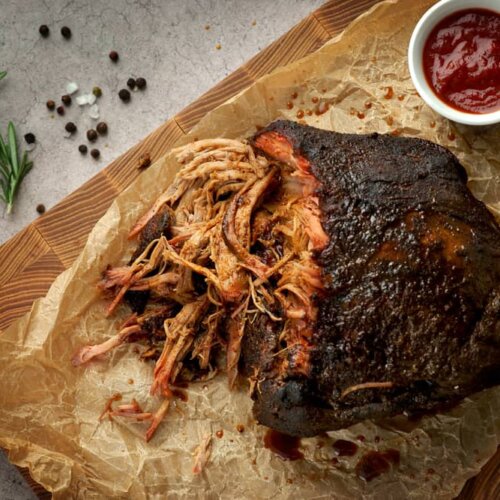
Smoked Pulled Pork
Ingredients
- 1 8 lb pork shoulder
- 1/4 cup light brown sugar
- 2 tbsp salt
- 2 tbsp black pepper
- 2 tbsp garlic powder
- 2 tbsp smoked paprika
- 1 tbsp ground mustard
- 1 tbsp onion powder
- 1 tbsp chipotle powder
- apple cider vinegar, for spritzing
Instructions
- Trim the pork shoulder and score the fat cap
- Mix the brown sugar and all seasonings together. Spread the mixture on all sides of the pork. Let the pork rest as you prepare the smoker.
- Prepare the wood chips and water pan in the smoker, and preheat the smoker to 225 degrees.
- Transfer the pork to the smoker fat side up and cook for several hours until it reaches 150-160 degrees, spritzing with apple cider vinegar each 1-2 hours.
- Wrap the pork in foil or butcher paper and continue cooking for another 2-3 hours or until it reaches 200 degrees.
- Rest the wrapped pork at room temperature for 30-45 minutes before shredding it.
- If desired, mix the pork with your favorite barbecue sauce.

